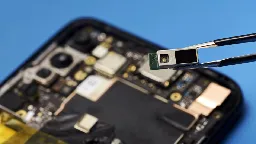100x Faster Than Wi-Fi: Li-Fi, Light-Based Networking Standard Released
100x Faster Than Wi-Fi: Li-Fi, Light-Based Networking Standard Released

www.tomshardware.com
100x Faster Than Wi-Fi: Li-Fi, Light-Based Networking Standard Released

Proponents boast that 802.11bb is 100 times faster than Wi-Fi and more secure.


